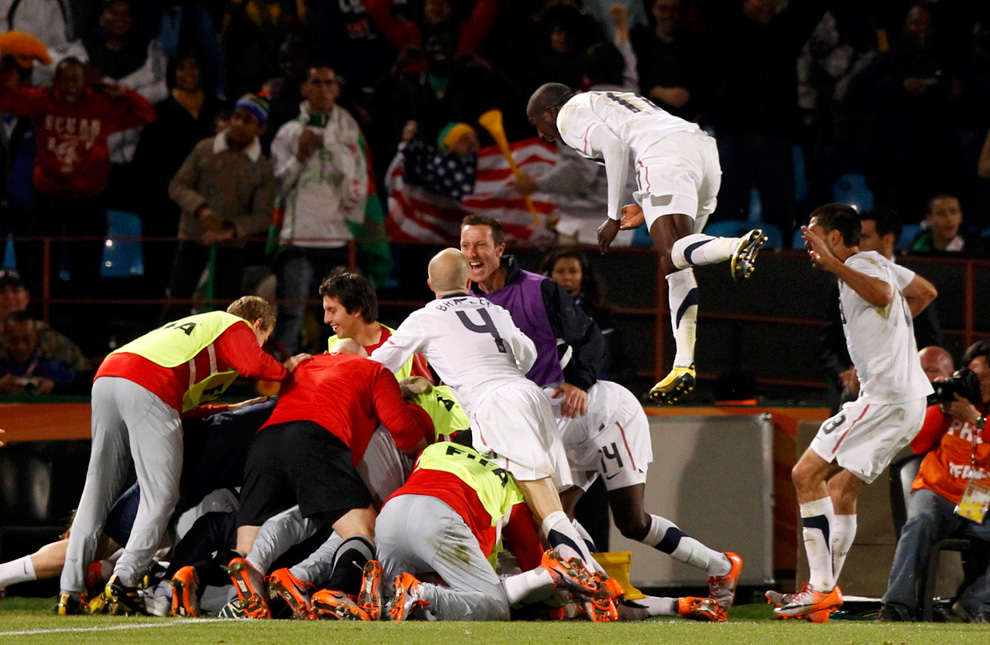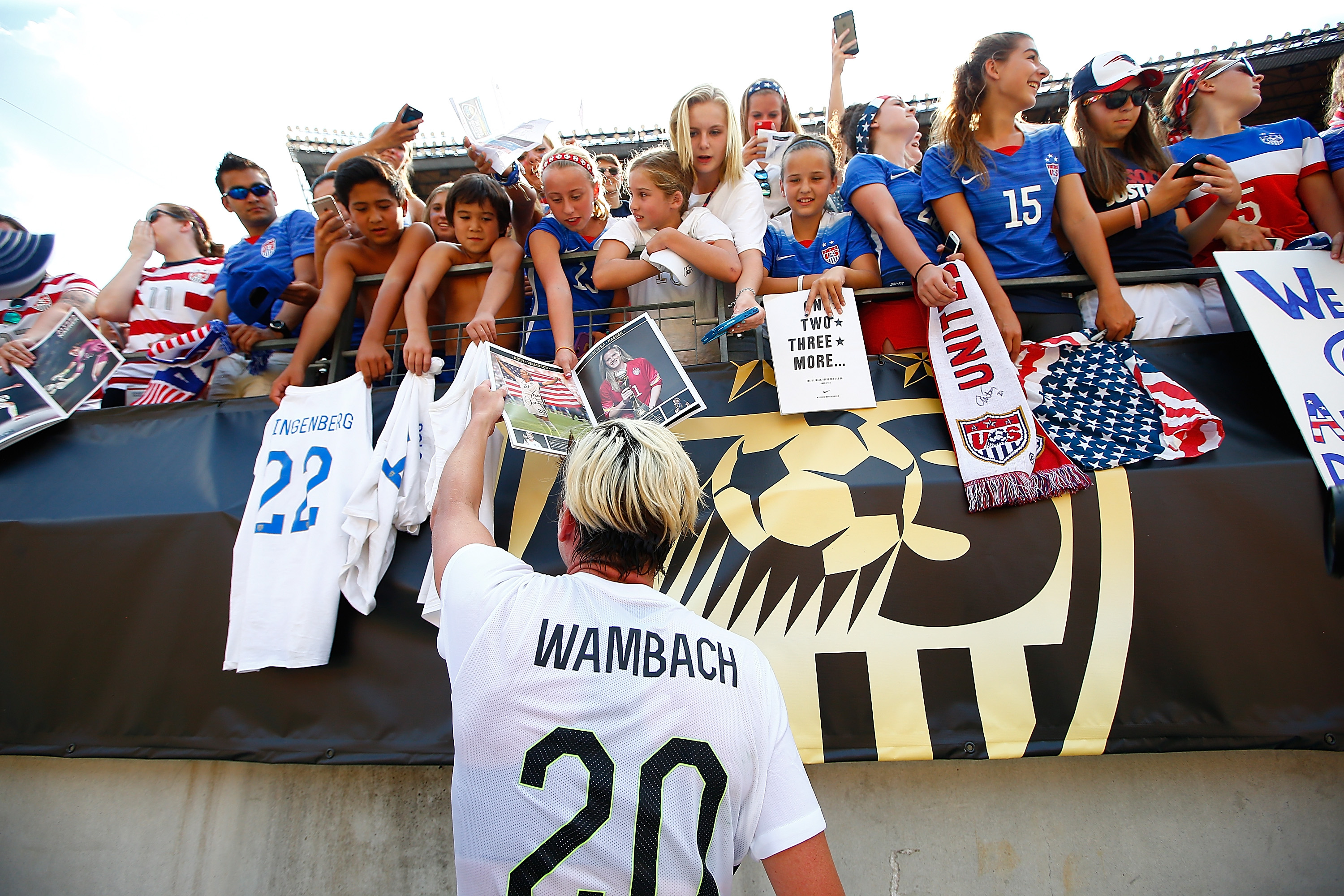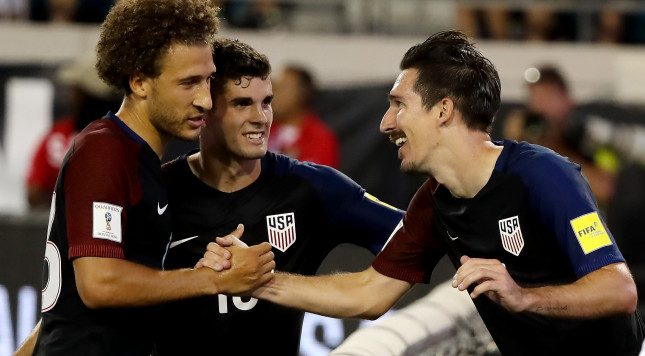The first game of the Hex is coming on Friday, and the United States will face Mexico at Columbus’s MAPFRE Stadium, the traditional hosting site for these crucial rivalry games. Perhaps this match can serve as a respite from the hateful and divisive talk that has emanated from this year’s, um, interesting presidential election.
Hopefully, the two fanbases (which are sure to have plenty of representatives) will get along perfectly well with each other despite the person who will be taking over as president of the United States in two months. So if you’re at the game, do whatever you can to keep the peace (we’re looking at you, American Outlaws).
And, on a lighter note, hopefully we’ll see another “Dos a Cero” in favor of our great country, which deserves to see something go our way after the last few weeks.
To get you prepared for this all-important clash of neighboring countries, I give you the US’s three keys to victory against Mexico.
1. Spacing at the top
Judging from the lineups Jurgen Klinsmann used at this summer’s Copa America and in September World Cup qualifiers, the formation will be 4-1-3-2 for the US in Columbus. Michael Bradley will start at the base of the midfield while three of Sacha Kljestan, Jermaine Jones, Christian Pulisic, Julian Green, Graham Zusi, and Alejandro Bedoya will play higher. The striking pair is the most important feature of the formation, however.
It’s generally hard to predict who Klinsmann will select in his starting lineups, but over the last few months, he’s gotten more and more predictable, so we should have a fairly good idea of who will play up top. Jozy Altidore and Bobby Wood seem like sure bets barring some sort of injury or pre-game Klinsmann seizure.
It would be a different scenario if Clint Dempsey (get well soon) were healthy, of course. He’d be starting next to Altidore — who is a traditional, back-to-goal No. 9 — as a goal-poaching, possession-based true second forward. The partnership between Dempsey and Altidore is a natural one and a very effective one, but the same can not be said about the Wood-Altidore tandem.
The problem is not directed toward one of those individual players; instead, it is a product of their contrasting playing styles, and, more specifically, the space they tend to occupy while attacking.
Altidore’s game is, like I mentioned above, reminiscent of a traditional center forward. He hugs the back-shoulder of center backs before dropping deep to play with his back-to-goal, dragging the defender out and opening a wider channel for a second striker or an inverted winger to run into. With Toronto FC, Sebastian Giovinco filled that space. With the US, it’s been Pulisic and sometimes Dempsey of late.
Wood can run the channels as well as anyone — he’ll beat the Mexican backline in a footrace any day of the week — but that’s not his game. Too often, he will occupy the same spots as Altidore in the attack; he will camp out in the half-spaces between midfield and defense more than he will drift out wide or inhabit the A and B gaps. This means that they clog each other up and make their attacking movement too predictable, and thus easier to defeat.
These two remain two of the best American players in the entire pool, and they’re most definitely the top options at striker outside of Dempsey, so they will probably start. How they work next to each other and how they create scoring opportunities will be crucial for the United States.
2. Keep Bradley in defensive midfield
This really shouldn’t be something that has to be said, but as we’ve come learn with Klinsmann, things aren’t always as they should be. Michael Bradley has played as pure No. 6 for club and country over the past year, and he’s been effective in that role, but it’s always possible that our manager will decide to tinker at the worst possible time.
It needs to be known that Bradley does not play in a double-pivot system next to another central midfielder, he is not a box-to-box player, and he most definitely is not a No. 10 despite Klinsmann’s previous insistence. I sincerely hope that Jurgen takes this into account when not only putting together his starting XI but designing his tactical approach.
The concern is not that the captain will be replaced in the holding role and pushed farther upfield; Klinsmann did not select a valid backup option. Caleb Stanko — a 23-year old on the bench of last-place Swiss league and Liechtenstein-based club FC Vaduz on loan from the Bundesliga’s SC Freiburg — is the only other natural defensive midfielder on the entire 26-man roster.
Rather, we should be worried that the formation will be a deep-sitting flat 4-4-2 without a midfield playmaker, thus leaving Bradley and another midfielder to play together in a double-pivot system that has not been tested. Something like this would force Bradley to step up the field at times to cover the attacking gaps and a player like Bedoya who is not a natural No. 6 to fend for himself in front of the backline.
Distribution from the back would be severely hampered if Klinsmann were to pull this all-too-possible stunt, and Mexican striker Chicharito Hernandez would be afforded ample space in front of a backline that will be without Geoff Cameron.
Keep it simple and let Bradley play his natural position, Jurgen. It’s the right choice.
3. Cameron’s replacement
As I mentioned above, starting center back Geoff Cameron is injured and will not be unavailable for this international break. Hurt with Stoke City in the Premier League, his club manager was adamant about Cameron’s availability prior to this week’s qualifiers, and his wish was granted: Klinsmann left him off the roster.
Cameron and John Brooks had been the regular starters in central defense since the Copa America this summer, and they’ve been very successful as partners. The other potential candidates to replace Cameron are Matt Besler, Omar Gonzalez, Michael Orozco, Steve Birnbaum, and Cameron Carter-Vickers.
Gonzalez will most likely fill in, as he has looked solid enough in previous international appearances and has emerged as a regular starter for Pachuca in Liga MX. Besler has not been a fixture for Sporting KC in MLS, while Birnbaum has been shaky in recent national team opportunities, giving the nod to Gonzalez.
Brooks and Gonzalez have rarely played together in defense, and they will have to develop some quick chemistry against an elite Mexican side that will test them for the full 90 minutes. Their ability to play together right off the bat and to find the correct rhythm in possession will be key for the US.






